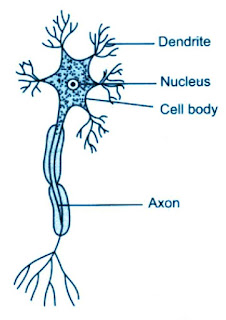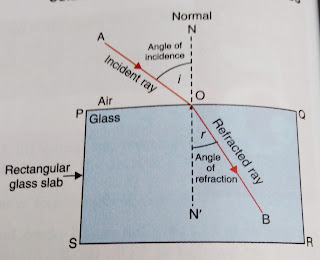NCERT Solutions for Class 6 Science Chapter 13 Fun with Magnets
Here you get NCERT Solutions for Class 6 Science Chapter 13 Fun with Magnets Pdf free download.In NCERT Solution for Class 6 Science with Answers you get question-answer based on latest exam pattern. By providing NCERT Solutions for Class 6 Science Chapter 13 Fun with Magnets with Answers our target to help students get the concept of the lesson very well.
You can also visit NCERT Solutions for Class 6 Science Chapter 13 Fun with Magnets to revise your syllabus thoroughly and enhance the chances of securing high marks in your board exams. It also helps in your Electric Current and its Effects Class 6 online test, online exam for admission well.
-------------------------------------------------------------
Board CBSE
-------------------------------------------------------------
TextBook NCERT
-------------------------------------------------------
CLASS Class 6
--------------------------------------------------------
SUBJECT Science
----------------------------------------------------------
CHAPTER Chapter 13
-------------------------------------------------------------
SUBJECT Fun with Magnets
--------------------------------------------------------------
NCERT Solutions for Class 6 Science Chapter 13 Fun with Magnets
Question 1:
Fill in the blanks in the following
(i) Artificial magnets are made in different shapes such as __________, __________ and
____________.
(ii) The Materials which are attracted towards a magnet are called________.
(iii) Paper is not a ______ material.
(iv) In olden days, sailors used to find direction by suspending a piece of ___________.
(v) A magnet always has __________ poles.
Answer 1:
(i) Artificial magnets are made in different shapes such as bar-magnet, cylindrical
magnet and horse-shoe magnet.
(ii) The Materials which are attracted towards a magnet are called magnetic materials.
(iii) Paper is not a magnetic material.
(iv) In olden days, sailors used to find direction by suspending a piece of bar-magnet.
(v) A magnet always has two poles.
You may also Like
Question 2:
State whether the following statements are true or false
(i) A cylindrical magnet has only one pole.
(ii) Artificial magnets were discovered in Greece.
(iii) Similar poles of a magnet repel each other.
(iv) Maximum iron filings stick in the middle of a bar magnet when it is brought near
them.
(v) Bar magnets always point towards North-South direction.
(vi) A compass can be used to find East-West direction at any place.
(vii) Rubber is a magnetic material.
Answer 2:
(i) A cylindrical magnet has only one pole. (False)
(ii) Artificial magnets were discovered in Greece. (False)
(iii) Similar poles of a magnet repel each other. (True)
(iv) Maximum iron filings stick in the middle of a bar magnet when it is brought near
them. (False)
(v) Bar magnets always point towards North-South direction. (True)
(vi) A compass can be used to find East-West direction at any place. (True)
(vii) Rubber is a magnetic material. (False)
Question 3:
It was observed that a pencil sharpener gets attracted by both the poles of a magnet although its body is made of plastic. Name a material that might have been used to make some part of it.
Answer 3:
The blade of the pencil sharpener made by iron which is a magnetic substance and magnetic substance is attracted by a magnet. Hence the pencil sharpener is attracted by both sides of the magnet
Question 4:
Column I shows different positions in which one pole of a magnet is placed near that of the other. Column II indicates the resulting action between them for each situation. Fill in the blanks.
Answer:
Question 5:
Write any two properties of a magnet.
Answer 5:
Attractive and Repulsive property: Opposite poles of two magnets attract each other while like poles of two magnets repel each other.
Directive Property: A freely suspended magnet always stops in the North-South direction.
Question 6:
Where are poles of a bar magnet located?
Answer 6:
The poles of the bar magnet are located at its two endpoints. (actually the poles are located near to the ends of the magnet)
Question 7:
A bar magnet has no markings to indicate its poles. How would you find out near which end is its north pole located?
Answer 7:
Tie the bar magnet with a string and freely suspend it. The bar magnet will stop in the North-South direction. The end of the bar magnet which stops in the North direction is the north pole of the magnet and which stops in the south direction is the south pole of the magnet.
NCERT Solutions for Class 6 Science Chapter 13 Fun with Magnets
Question 8:
You are given an iron strip. How will you make it into a magnet?
Answer 8:
We take a rectangular piece of soft iron strip.
Now we take a strong bar magnet and keep in contact with its north pole with one edge (say A) of the iron bar.
Without lifting the bar magnet, move it along the length (from A to B) of the iron bar till we reach the other end.
Now we lift the magnet and bring the pole (the north pole) to the same point (that is A) of the iron bar from which we began
Then again we rubbed the iron bar with the bar magnet from A to B.
We repeat this process about 30-40 times.
After that the iron bar become a magnet
Question 9:
How is a compass used to find directions?
Answer 9:
A compass is usually a small box with a glass cover on it. Inside the box, there is a magnetic needle which can rotate freely around a pivot. The compass also has a dial with directions marked on it.
When we wanted to know the direction of a place, we placed the magnet on a plane surface. Then the needle of the magnet rotates and stops in the north-south direction. To identify the north-pole of the magnetic needle, it is usually painted in a different colour.
Question 10:
A magnet was brought from different directions towards a toy boat that has been floating in water in a tub. Affect observed in each case is stated in Column I. Possible reasons for the observed affects are mentioned in Column II. Match the statements given in Column I
with those in Column II.
Answer:
We try to give some information about NCERT Solutions for Class 6 Science Chapter 13 Fun with Magnets with Answers Pdf free download which may help you. For any suggestion or any queries regarding Electric Current and its Effects CBSE Class 6 Science MCQ Multiple Choice Questions with Answers, drop a comment below and we will join you soon.

